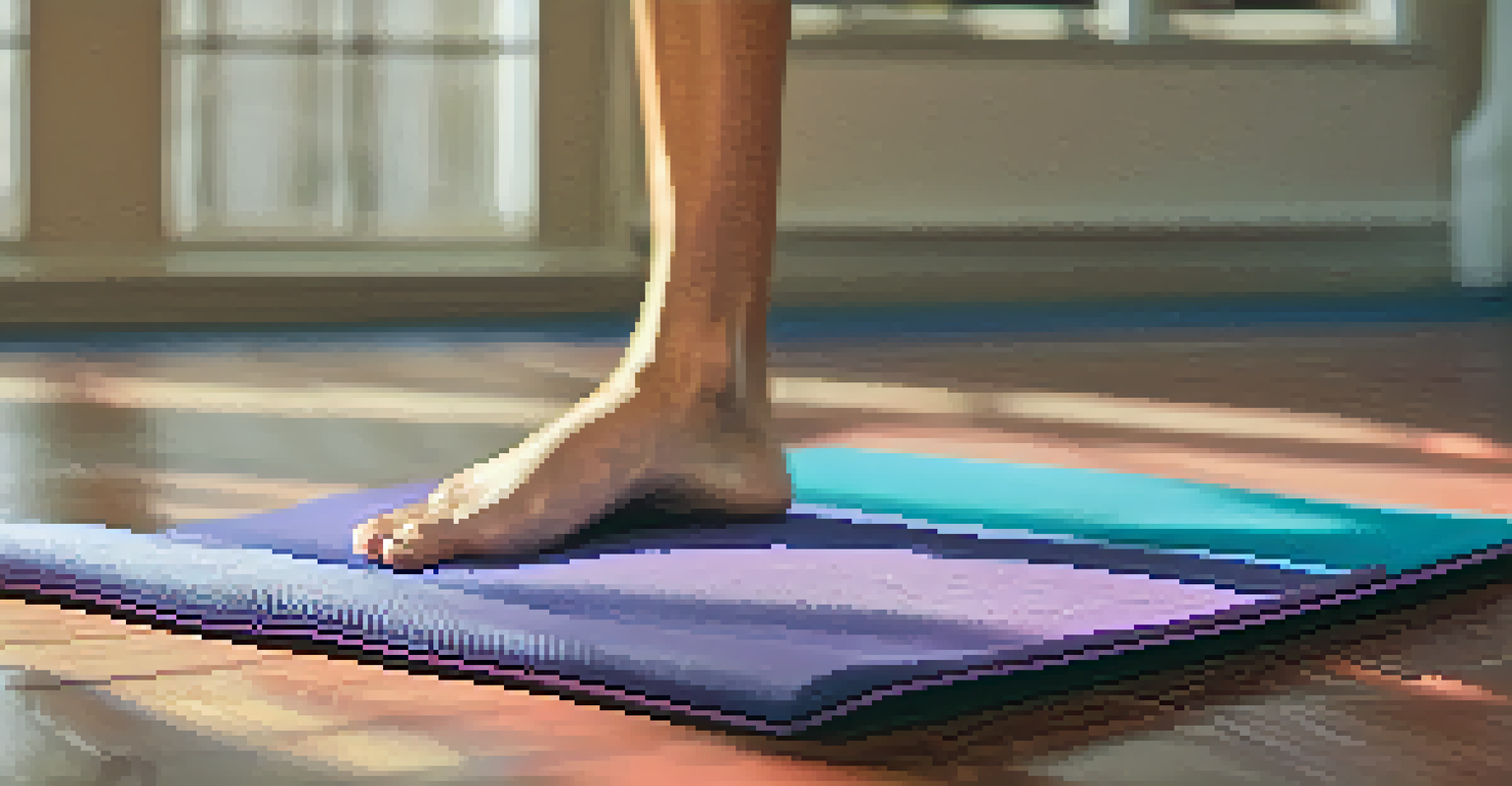Customizing Your Warm-Up Routine for Optimal Performance

Understanding the Importance of a Warm-Up Routine
A warm-up routine is more than just a few stretches; it’s a crucial part of any athletic performance. By gradually increasing your heart rate and circulation, you prepare your body for the physical demands ahead. Think of it as getting your engine running before hitting the road; without it, you risk stalling mid-journey.
The more you sweat in peace, the less you bleed in war.
Skipping a proper warm-up can lead to injuries and reduced performance. Studies show that athletes who warm up correctly experience less muscle soreness and improved flexibility. Just like a musician wouldn’t play a concert without tuning their instrument first, you shouldn’t jump into intense activity without preparing your body.
In essence, a well-structured warm-up routine sets the stage for success, allowing you to maximize your potential during workouts or competitions. This is why customizing your routine to fit your specific needs and goals is essential.
Assessing Your Individual Needs and Goals
Before customizing your warm-up, take a moment to assess your individual needs and goals. Consider factors such as your sport, fitness level, and any past injuries. Just like a chef tailors a recipe to fit the ingredients they have, you should adapt your warm-up to suit your body’s requirements.

For instance, a runner might focus on dynamic stretches that engage the legs and core, while a weightlifter might prioritize mobility work for the shoulders and hips. Understanding your specific goals can help you create a routine that prepares your body effectively for the tasks ahead.
Warm-Ups Prevent Injuries
A proper warm-up routine reduces the risk of injuries and enhances overall athletic performance.
By taking the time to evaluate your needs, you can design a warm-up that enhances your performance and minimizes the risk of injury. Remember, one size does not fit all when it comes to warming up.
Incorporating Dynamic Stretching Techniques
Dynamic stretching is an active form of warm-up that involves movement, making it an effective way to prepare your muscles. Unlike static stretches, which hold a position, dynamic stretches mimic the motions of your sport and promote flexibility and mobility. Think of it as a rehearsal before the main performance.
Success is where preparation and opportunity meet.
Examples of dynamic stretches include leg swings, arm circles, and walking lunges. These movements increase blood flow to the muscles and elevate your heart rate, which can enhance your overall performance. Just as an artist needs to warm up their hands before painting, athletes benefit from activating their muscles beforehand.
Incorporating dynamic stretches into your warm-up can significantly improve agility and coordination. By engaging your muscles in a way that resembles the actual activity, you’re setting yourself up for a smoother, more efficient workout.
Adding Sport-Specific Movements to Your Routine
To further enhance your warm-up, consider adding sport-specific movements that mimic the actions you'll perform during your activity. This approach not only warms up your muscles but also helps your body adapt to the specific demands of your sport. It’s like practicing the dance steps before the big performance.
For example, a basketball player might practice dribbling and shooting, while a swimmer could incorporate strokes and turns. By incorporating these specific movements, you’re not only preparing your body but also sharpening your motor skills and mental focus.
Customize Your Warm-Up
Tailoring your warm-up to fit your individual needs and goals ensures optimal preparation and effectiveness.
This tailored approach ensures that your warm-up is as effective as possible, leading to improved performance and reduced risk of injury. It’s all about getting your body in sync with what’s to come.
Utilizing Mobility Exercises for Joint Health
Mobility exercises are essential for maintaining joint health and enhancing overall performance. These exercises focus on the range of motion in your joints, ensuring that they function optimally during your activity. Think of your joints as the hinges on a door; they need to move smoothly to open and close correctly.
Incorporating mobility exercises like hip circles, thoracic spine rotations, and ankle pumps can help prevent stiffness and improve your movement quality. This is particularly important for athletes who engage in repetitive motions, as it helps to maintain balance and prevent injuries.
By prioritizing mobility in your warm-up routine, you’re investing in your long-term athletic health. Remember, a well-oiled joint is key to achieving peak performance.
The Role of Mental Preparation in Your Warm-Up
Mental preparation is just as crucial as physical warm-up techniques. Taking time to focus your mind can help improve your performance and reduce anxiety. Visualizing success and setting intentions can be powerful tools in getting you mentally ready for the challenges ahead.
Before starting your physical warm-up, spend a few moments breathing deeply and visualizing your performance. Picture yourself executing your movements flawlessly, which can help boost your confidence. Just like a public speaker rehearses their speech, athletes benefit from mental rehearsal too.
Mental Prep Boosts Performance
Incorporating mental preparation techniques into your warm-up can significantly enhance focus and confidence.
Incorporating mental preparation into your warm-up routine can enhance your focus and readiness, leading to a more successful performance. Remember, a strong mind contributes to a strong body.
Listening to Your Body: Adjusting as Needed
Listening to your body is vital when customizing your warm-up routine. Everyone’s needs and responses can vary, so it’s important to remain flexible and adjust your warm-up as necessary. Just like a carpenter adjusts their tools for each project, you should tailor your warm-up to how you feel on a given day.
If you're feeling tight or sore, consider spending more time on specific areas that need extra attention. Conversely, if you feel energized and ready to go, you might choose a more intense warm-up. Being in tune with your body allows you to maximize your performance while minimizing injury risk.

Ultimately, being adaptable and responsive to your body’s signals will lead to a more effective warm-up routine. Embrace the idea that your warm-up is a dynamic process.
Creating a Consistent Warm-Up Routine
Consistency is key to reaping the benefits of your customized warm-up routine. By making your warm-up a regular part of your training, you’ll not only improve your performance but also develop a habit that protects you from injuries. Think of it as a daily ritual that primes you for success.
To create a consistent routine, consider setting a specific time and space for your warm-up before every workout or competition. This can help signal to your body that it’s time to transition into performance mode. Just like an artist has a studio, find a designated area where you can focus on your warm-up.
Over time, a consistent warm-up routine will become second nature, enhancing both your physical and mental readiness. Remember, a well-prepared athlete is a successful athlete.